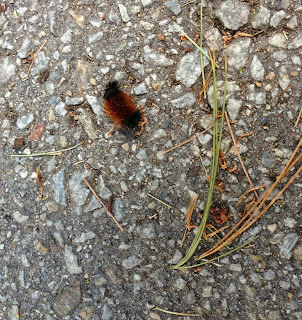 |
| Crow tails are flat across while raven tails are more extended. |
Go to the All About Birds site (Cornell University) to learn more about the Common Ravens (but not so common here!) and to hear their call.
http://www.allaboutbirds.org/guide/Common_Raven/id
So then later came the 2nd cool sighting. I was outdoors having just taken the snow blower out of the truck and was filling the feeders, breaking up sticks for kindling, etc., when I heard the Pileated Woodpecker over toward Suzanne and Micheal's. I ran to where I could look into their trees but didn't see anything. Grabbed the dog (or he would bark until I got back...) and ran to the street. My eye ran across the hole where the screech owl lived this spring and it looked funny. I watched for a while and saw a movement so ran back to the house to get binoculars (I did a lot of running in this period of time!). I opted for running upstairs to get the good optics and then ran back to the street. Yup! The pileated was in the hole! The ironic thing is that it was originally a pileated woodpecker's hole and that is why I was looking for the screech owl there; the screech lived there this spring, now the hole has a pileated again! Active place.
Again, I recommend you go to All About the Birds to learn more about this other wonderful big bird!
http://www.allaboutbirds.org/guide/Pileated_Woodpecker/id





































